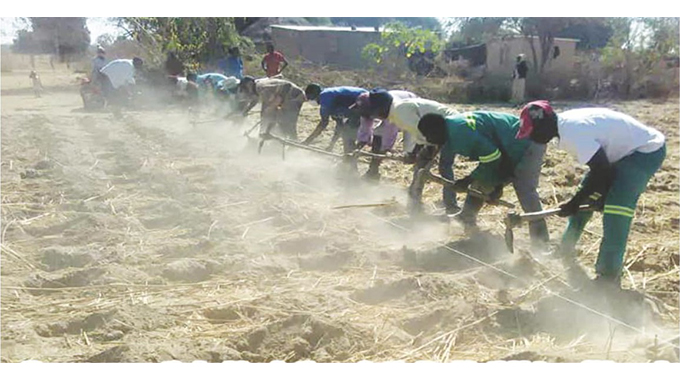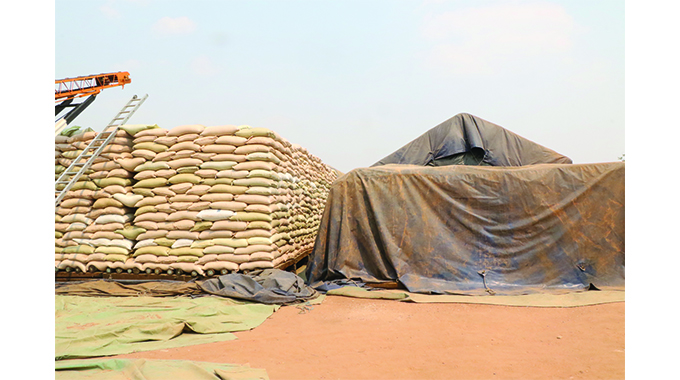The Chronicle

Sikhumbuzo Moyo and Sukulwenkosi Dube-Matutu, Chronicle Reporters
GOVERNMENT has started delivering maize seed to the Grain Marketing Board (GMB) depots in the two provinces of Matabeleland for the 2022/2023 farming season under the Climate-Proofed Presidential Inputs Scheme, popularly known as Intwasa/Pfumvudza.
Bulawayo is yet receive maize seed although some of the agricultural inputs comprising fertiliser and small grains have since been delivered at the local GMB depot.
GMB depots in Lusulu in Binga, Nkayi and Lupane districts in Matabeleland North this week took delivery of 50 tonnes of maize seeds as preparations for the 2022/23 summer cropping season continue to gather momentum.
GMB Lusulu received 30 tonnes of maize seed while Nkayi got 20 tonnes Lupane received 10 tonnes. The agricultural inputs are an addition to the 18 050 tonnes of fertilizer delivered in the region last month.
In Matabeleland North Province, over 200 000 farmers are set to receive inputs under Intwasa/Pfumvudza while 130 000 farmers in Matabeleland South will benefit under the programme.
 Intwasa/Pfumvudza mode of farming
Intwasa/Pfumvudza mode of farmingActing director of agricultural rural development and advisory services for Bulawayo and Matabeleland North provinces, Mr Dumisani Nyoni said they have started the process of registering beneficiaries ahead of the distribution later this month.
This year, Government has introduced the use the Electronic Input Distribution Application for the disbursement of Pfumvudza/Intwasa inputs to curtail possible abuse of inputs thereby compromising the programme’s effectiveness.
“Inputs inflows are continuing, we have so far received 30 tonnes of maize seeds at Lusulu GMB depot, 20 tonnes for Nkayi and 10 tonnes for Lupane and registration of beneficiaries is in progress. These figures are determined by farming households per each area, and so far the process is going on well,” said Mr Nyoni.
The introduction of the online platform is part of the Ministry of Lands, Agriculture, Fisheries, Water and Rural Development’s efforts to ring-fence the Presidential Input Scheme from abuse, hence the need for farmers to register on this platform, as they will only access inputs through the platform.
Registered farmers are given grower’s numbers that will later be used in a productivity audit, as the Government mainstreams business practices in the agricultural sector.
The farmers have to sign-up on the Electronic Input Distribution Application to be considered for inputs and will also have to log in to confirm reception of inputs. This system will assist in increasing accountability and transparency on the part of both farmers and distributors.
Mr Nyoni said on Monday Hwange received 120 tonnes of Compound D fertiliser and 93,65 tonnes of top dressing.
In Matabeleland South, Matobo district received 10 tonnes of maize seed under the Intwasa/Pfumvudza Scheme. Other districts are yet to receive the inputs.
The district development coordinator for Matobo, Mr Obey Chaputsira said they also received 35 tonnes of sorghum and fertliser with distribution expected to be rolled out this month.
 Presidential inputs
Presidential inputs“The district received 10 tonnes of maize seed under the Climate-Proofed Presidential Inputs Scheme. In addition, we received 35 tonnes of sorghum seed and we expect to receive pearl millet soon,” he said.
“This is a positive development because farmers will be able to plant early which will then increase their chances of recording a good yield. At this rate the distribution of grain to farmers will start soon.”
Mr Chaputsira said the response from farmers in taking up the Intwasa programme is impressive.
“People now understand the programme and they have seen its benefits. When the distribution process starts we are confident that farmers will be ready since they are already in the process of preparing the land,” he said.
Acting provincial director for the agricultural rural development and advisory services in Matabeleland South, Mr Mkhunjulelwa Ndlovu said more districts are expected to receive the inputs.
He said in the meantime farmers are undergoing the basic training through agricultural rural development and advisory services.
This year Government will only supply inputs to farmers based on their agro-ecological region as opposed to the farmer’s interest. Farmers in regions with higher rainfall will focus more on maize, although with an option to grow traditional grains as a stop gap measure in the event of a dry spell.
The Intwasa programme is set to benefit 3,5 million farmers across the country in communal A1, small-scale commercial farming, old resettlement and peri-urban farming sectors in the production of cereals, oil seeds and legumes including a special smaller pack for 500 000 urban farmers.
Under the programme, each farming household will get an input package of 10kg maize seed, 5kg sorghum, 2kg pearl millet, 5kg soya beans, 2kg sunflower/castor beans and 5kg sugar beans or 5kg cowpeas or roundnuts.
The seed type and varieties will depend on the farming region. The programme contributed 33 percent of the country’s maize output last year.
The country requires 2,2 million tonnes of maize for human and livestock consumption and the three million tonnes target will position Zimbabwe as a significant player in grain production in the region.
Agricultural Advisory and Rural Development Services chief director Professor Obert Jiri said the distribution of inputs this year will be done according to agro-ecological regions to maximise on the potential of the programme given the high possibility of erratic rains in terms of commencement, distribution and cessation.
In low rainfall agro-ecological regions, three plots will be under cereals, maize, sorghum and pearl millet with the maize plot being reserved for household food and the other two under traditional grains for commercial sale.
To date, Government has delivered over 2 200 tonnes of seed to GMB depots across the country under the Presidential Input Scheme with priority given to areas that are normally inaccessible during the rain season receiving the largest seeds chunk.
 Dr Anxious Masuka
Dr Anxious MasukaThis year farmers are expected to plant 2 million hectares of maize. For sorghum, Government has set a target of 380 000 hectares to produce 304 000 tonnes while 250 000ha are set to be put under pearl millet to produce 150 000 tonnes.
Farmers are expected to plant 25 000ha of finger millet to produce 13 750 tonnes of the crop. Some farmers have started land preparations while others are procuring inputs. In the 2022/23 state of preparedness report, Lands, Agriculture, Fisheries, Water and Rural Development Minister Anxious Masuka said the 2022/23 summer programme’s strategic objective was to sustainably increase crop production and productivity to meet and surpass the national requirements for both human consumption and industrial use.
Self-financed farmers are expected to put 1 369 798ha of maize, the Agricultural Rural Development Authority farms 17 278ha, private sector 40 000ha, the National Enhanced Agriculture Productivity Scheme (NEAPS) and Pfumvudza 367 964ha. – @skhumoyo @DubeMatutu
Article Source: The Chronicle
